As scholars are allowed to experience and visit a living ecosystem from the past, they may be able to imagine and wish to sustain nature of their cities in the future. The lake thus becomes a classroom.
The abundance of beautiful lakes, like Lake Ulsoor, a popular site for family gatherings used to be an indelible part of the public image of Bangalore. Yet, in the past four decades, Bangalore has lost almost 79% of its water bodies and more than 90% of remaining lakes are heavily polluted or severely threatened as a result of encroaching urbanization. Against the backdrop of these challenges, Bangalore lakes have become important sites for various types of learning initiatives, research and discovery. Lakes (and other surface water bodies) capture the attention of students and scientists, encouraging generations of scholars to apply and test myriad frameworks of relevance to urban scholarship. For instance, they have been studied as social ecological systems, by documenting and understanding both the history of the place, as well as the many socio-cultural groups that lay claim to resources in lakes and in their surroundings. Urban planning and environmental students have also conducted studies to analyse the storage capacity of these bodies of water, in relation to a burgeoning city population, and a morphing cityscape. Thus, scientific and sociological studies on Bangalore lakes have generated a multifaceted understanding of nature in the city through different lenses such as urban commons and social inclusion; and urban practices such as citizen science, civic collaborations and lake encroachment.

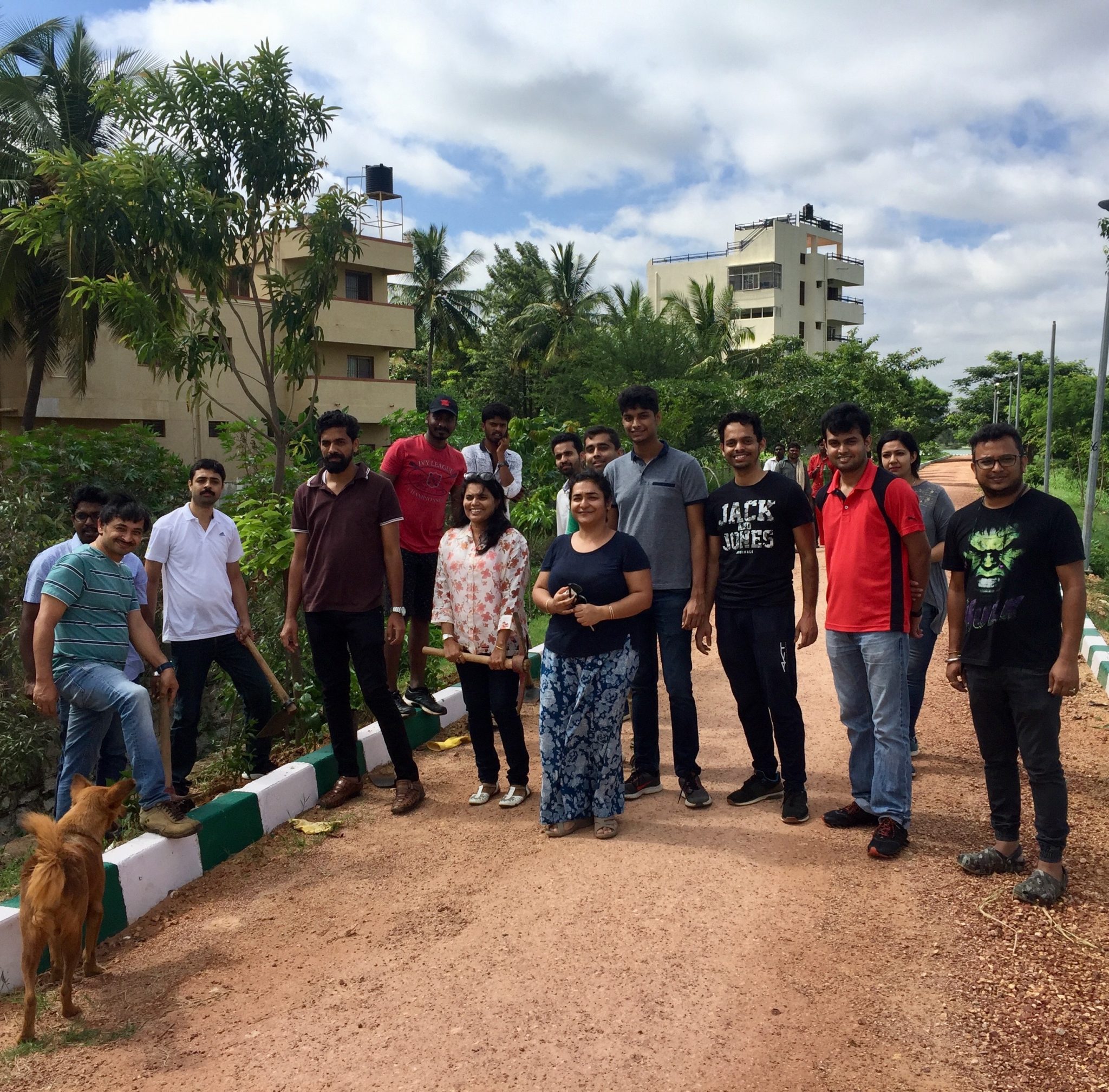
More recently, citizen science initiatives to test pollution levels and bathymetry were conducted at several lakes in Bangalore. As a result of these efforts, what we have is a significant body of “scientific knowledge” on Bangalore lakes, with dispersed examples of translating this knowledge for wider, public consumption. Simultaneously, multiple active citizen groups associated with lakes, have achieved significant levels of awareness building among communities through cleanliness drives, events, talks and cultural programmes. Several of these awareness drives coincide with efforts which can best be understood as educational engagements. These range from extended learning programmes for school children, to guided visits and tours for practitioners, and university scholars. Yet, the translation of ‘expert knowledge’ into ‘environmental education’ is happening in pockets and needs strengthening. An overview of several such educational endeavours reveals that lakes are in fact both objects of study and, places where study or learning happens, akin to an outdoor classroom. And that the place of study component occurs both as a site for testing technologies and nature-based solutions, and as a place of being, as part of nature.
This article captures the learnings from diverse educational practices at Rachenahalli Lake, in North Bangalore. It draws upon the work of committed citizens, facilitators, college and school teachers, and attempts to discern general findings, which are common across multiple initiatives. The investigation around lakes as sites of education started as an institutionally-funded assignment, while I was associated with the Indian Institute for Human Settlements. The original question I explored was whether lakes can become places of urban scholarship on a range of issues, including urban nature, nature-based solutions, the spatial and physical processes of urbanisation, and citizens’ agency to shape urban geography and create places for reflection, amidst rapid urbanisation. The interviews and my own reflections reveal educational content which nudges at the much larger potentiality of lakes as urban classrooms.
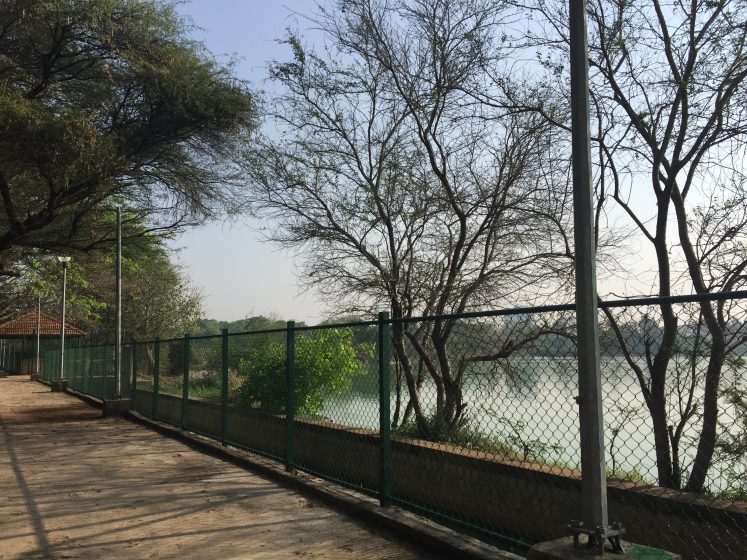
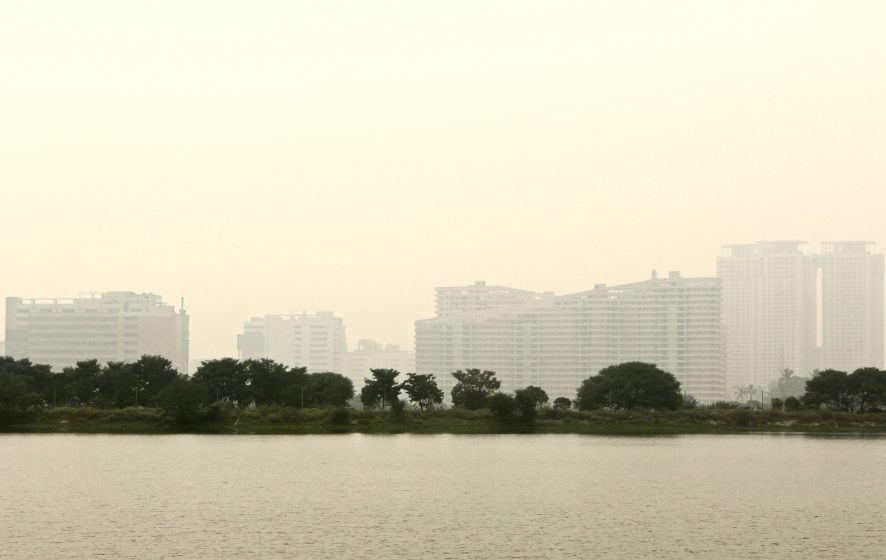
Early institutional arrangements for lake conservation
Jalmitra Trust was formed under the leadership of MGIRED (Mahatama Gandhi Institute for Renewable Energy and Development) a government institution with offices located at the Rachenahalli lakebed. The aim of the Jalmitra Trust was to achieve high levels of participation in visiting and maintaining a clean environment at Rachenahalli Lake. A functioning and healthy lake ecosystem was expected to attract and engage neighbouring communities; and help alleviate the stresses of living in an urban jungle. It could also help break away from the infamous legacy tied to the images of highly polluted, frothing and aflame lakes of Bangalore. Local ward committees and lake specific residents’ associations attempt to solve such problems, but often lack a collective voice and have to work very hard towards gaining legitimacy and agency. Jalmitra Trust aimed to provide a collective voice to citizens and resident associations passionate about Rachenahalli Lake restoration and maintenance.
Evolution of the dual mandates of environmental custodianship and education
As lake governance and associated structures were evolving, engagement with municipal departments and political leaders revealed the multi-layered structures which are involved in designing and implementing changes to support and maintain lake functions; and in improving community facilities and civic amenities, in and around the lakebed. As mentioned, MGIRED took the lead in formalising governance structures for environmental custodianship, which included the establishment of JalMitra Trust. Interestingly, part of the institution’s core mandate was to disseminate technical knowledge related to renewable energy and water management, among government officials, practitioners and government college students. These teaching and training activities were conducted both inside the MGIRED campus, as it hosted small-scale examples of renewable energy infrastructure (wind turbines and solar panels), and in the lakebed, which provided rich examples of ecological infrastructure, such as the wetland.
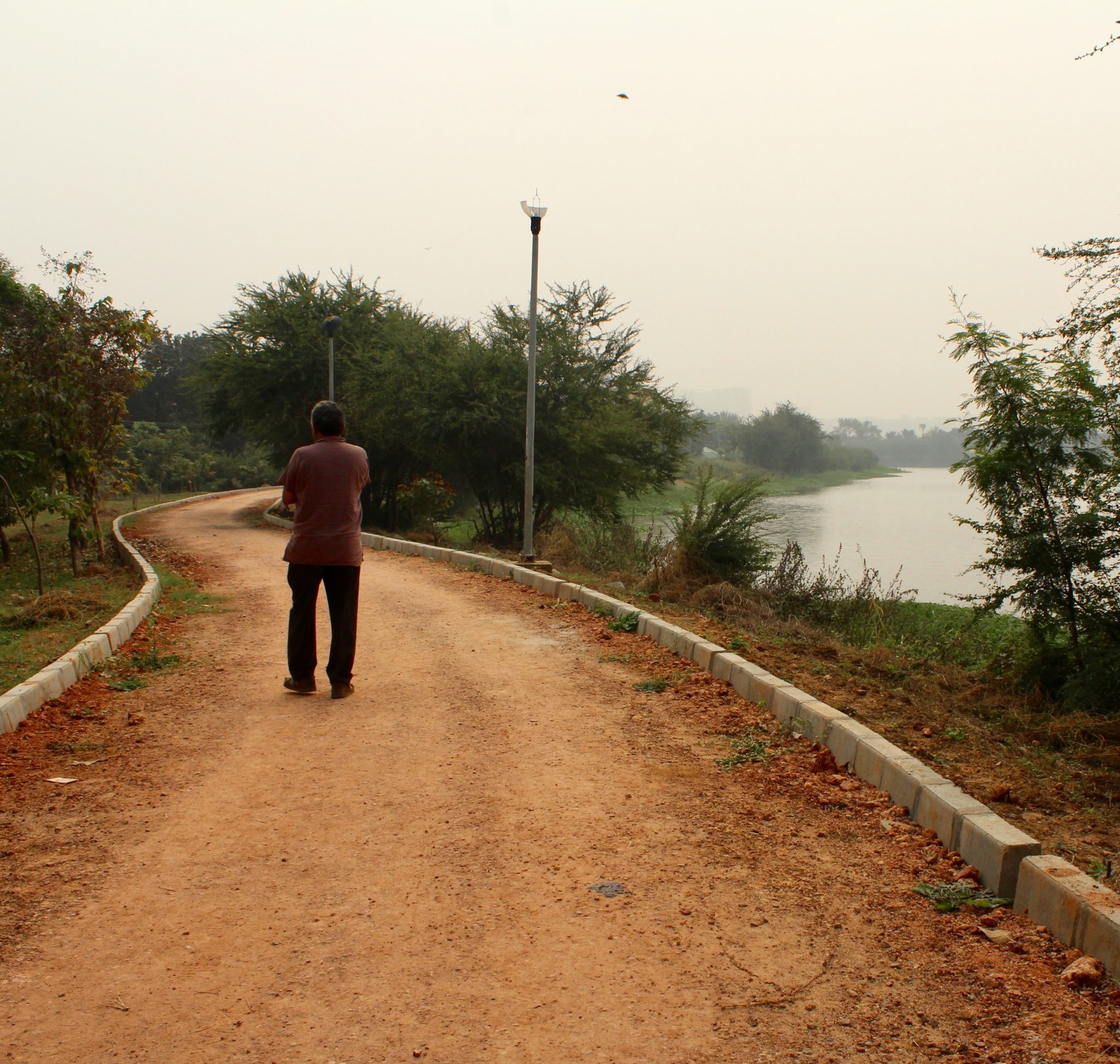
As civic engagement through the JalMitra Trust grew, the teaching agenda at the lakebed was expanded to include school children, from public and private schools. Facilitators, who were also members of the JalMitra Trust, found that engaging public schools was harder, due to bureaucratic requirements. Various teaching efforts across different audiences were undertaken, which are discussed more specifically in the next section.Facilitators interviewed for this research shared that young learners are naturally curious about several aspects of the lake, including the pollution levels. In order for them to understand the challenges associated with lake conservation, students were tasked to reach out to government officials, to enquire about and make recommendations for improving the lake. Having understood the limitations faced by local authorities in ensuring water quality while neighbouring communities allow untreated wastewater to flow into the lake, the students conducted awareness building campaigns. These knowledge-based endeavours were held at multi-storey apartment blocks and in various residential neighbourhoods. Funds were raised among the school community, and a cycling and tree-planting event was organised, participated in by the parents, school students, residential community-members, and neighbouring institutions. The organisers found it a great challenge to make the event inclusive to the point where residents of informal settlements would attend. However, sufficient awareness was created, so that the local politicians and municipal commissioners took note of the significance of the water body and formal lake management structures were established, after due process.
Developing and delivering an urban environmental curriculum
As discussed above, MGIRED staff were delivering teaching programmes to university students as part of their core mandate on the campus and in the lake vicinity. Through JalMitra Trust efforts, in early 2016, teaching events and training programmes were augmented to include school students, as well as non-technical colleges such as Srishti Design School. In the following narrative, these training programmes are classified across different student groups (middle and high school; pre-university, university), and content focus (ecology, sustainability, technology, urban design), exhibiting the wide variety of topics that can be taught using lakes as urban classrooms.
- The fundamentals of ecosystem services of urban lakessuch as maintaining biodiversity, sourcing medicinal plants, the value of soil and wetland for flood regulation and water cleansing. School students observed nature, explored birding, and experienced art and music, at dedicated events, along the lake boundary. They measured changes in pollution levels at the lake and were able to understand practical uses of different plants – pollution abatement, medicinal or ornamental. Some of their questions were addressed through interactions with scientists at a local research centre for ecology and by conducting experiments at the school laboratory. Queries about the quality of fish at the lake however, remained largely unanswered by the local fishermen.
- Global perspectives on sustainability, such as the value of nature in cities, global citizenship and climate change were taught to school children. There was a clear scaling up of content towards technology, to enhance urban eco-services such as ground water recharge, water purification and storm water management. At the same time, the challenges associated with lake governance were discussed, in the context of urban management and multiple actors and often, divergent agendas with regards to utilisation of land and water, to incite the budding social scientists. According to the facilitator, pupils established a deep connection with the lake in the process, sharing photographs of the place with overseas students, and speaking about the experience at their graduation.
- Application of principles taught within ecology / biologywere explained to school students, pre-university students of biology and university scholars of science, by showcasing the biodiversity at the lakeand explaining the working of a constructed wetland and its role in purifying storm-water. Students were able to observe the interactions of various parts of nature here, and practically apply classroom learning to an actual place. Science graduates were encouraged to explore relevant technologies and implementation of nature-based solutions.
- Urban water governancewas delved into greater detail for post graduate students of environmental sciences. Policies and laws related to the water sector and institutional arrangements were articulated to highlight the need for interdisciplinary approaches, which ensure that technical solutions converge with the socio-political context specific to a city, the hydrological system of which the lake is a part, and the lake
- Elements of urban designsuch as designing the lake boundary for cleanliness, children’s play area, the needs of walkers, joggers, cyclists and senior citizens, were explored by graduate students of art and design. The core idea was to imbue a sense of viewing the lake as a community learning and recreational facility.
- Technological interventions for lake water purificationsuch as sewage treatment plants, aerators, wetlands and water lifting mechanisms were the subject of study in a series of learning sessions for engineering students from metropolitan cities, facing the dual challenges of over-crowding and water scarcity, resulting in poor quality surface water.
- Environment and Sustainabilitywas taught to working professionals of urban local bodies, and state officers of the Indian Administrative Service and the Indian Forest Service. Related to the three core ideas of ecological services, community engagement and policy interventions, practitioners and officers learnt about the importance of waste water treatment, the revival of traditional water harvesting systems, the creation of tanks for storage of water, lake governance and community involvement.
- The role of communities in managing local resourceswas a half-day session planned and conducted for communities living in the lake vicinity, with the express aim of encouraging and improving community engagement. Such a learning session had to consider the varying degree of knowledge and interest among community members, and at the same time impart a sense of agency among them. Thus, the content had to skilfully scale up from teaching the importance of water, the lake, waste-water generation and current scientific methods of treatment and disposal, to conveying the significance of the various ecological services provided by the lake, including wastewater purification by the wetland. Moreover, the key role of communities in managing local natural resources and working with government institutions, as a pressure group, was explained.
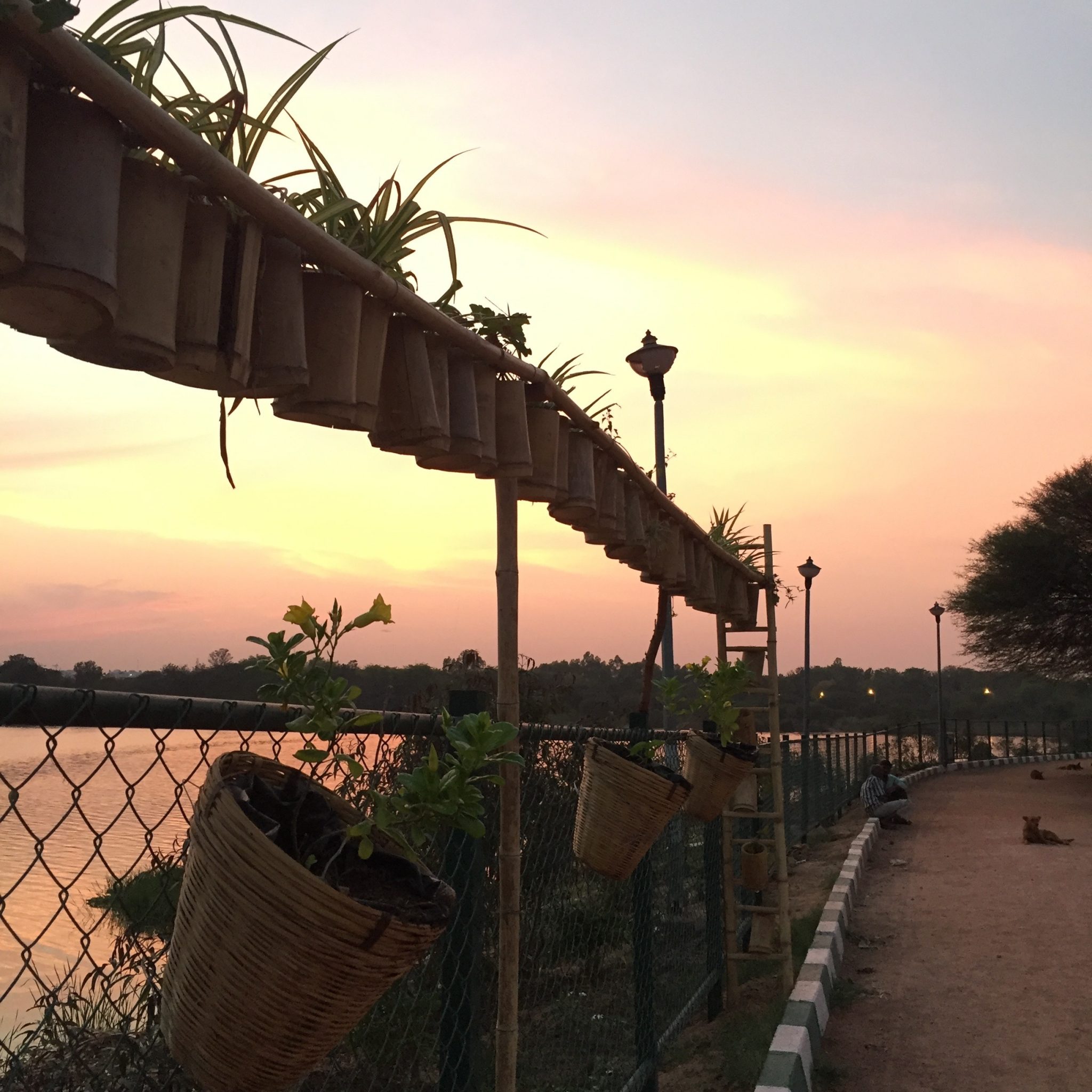
Desirable characteristics of the lake as a classroom
Interviews with facilitators also revealed characteristics and facilities which are desirable in the future, in order to enhance the capacity of the lakebed as a site for education.
Maintaining the non-commercial and natural character of the lake
The ecosystem of the lake is thriving, and currently a certain level of naturalness is maintained. Permeable surfaces are being maintained on pathways, ensuring catchment of local rainfall. Ordinances regarding lake governance here do not permit any vending or hawking, in contrast to other commercial lakes in the city, such as Lumbini Gardens, a mere 3 km from Rachenahalli, and also a part of the Hebbal valley lake system. Furthermore, the primary industry along the eastern boundary is non-polluting (the Manyata Technology Park). This is in stark contrast to polluting industries along lake systems in the south of Bangalore. Open areas around the lake allow relatively greater air movement, reducing local air pollution, and rendering a climate regulation service. Wildlife such as snakes have been spotted along walkways and in the lake water. Pelicans, which are a rare species in the rest of the city are spotted regularly at this water body.
Interviewees felt that this semi-natural character of the lake is imperative to utilising the surrounds for educational purposes. Without this character, the lake would resemble any other commercialised or urbanised water tank, servicing cultural or recreational activities of citizens. Education for diverse age groups and interests is possible when indigenous plants are utilised along the boundary, the wetland is maintained, attracting local birds, and commercial activities are kept at bay. However, there are concerns that current plantation drives, under the aegis of new governance arrangements and landscaping contracts, are limiting biodiversity, and concentrating on a few species, with limited functions. There are also fears of encroachment occurring on land parcels along the lake boundary, not meant for development, but nevertheless being built upon, due to pressures of urbanisation.
Greater access for the masses
Interviewees expressed that the lake and its surrounds should be opened up and made accessible for educational purposes and inclusive, knowledge awareness events. In the early years of civic engagement for environmental custodianship, the water body and its surrounds were easily accessible, from several points along the external boundary, and at any time of the day. However, as the governance changed with a larger role for the municipal government, and hard boundaries were instituted in the form of a metal fence and gates, access became controlled, requiring permissions at designated times and specified locations. It was also expressed that currently the elite, who are aware of the health benefits of walking in nature are able to maximise on the recreational and aesthetic services provided by Rachenahalli lake, and that this should change. Greater awareness would assist in drawing a diversity of people to the lake, such as through regular school excursions and participatory events. However, the challenge of balancing the natural characteristics of the lake system, while also providing greater access and improving facilities, still needs to be addressed.
Improved facilities and amenities
In terms of physical requirements, while trees provide shade, a gazebo would also provide cover from the rain. One such space has been created in the municipal park, but issues of access remain. Greater availability of maintenance funds has meant that paths are now clear of vegetation and debris. Provision of drinking water facilities and good quality sanitation amenities would increase the likelihood of people spending extended time in the lake vicinity.
Knowledge areas that can be explored further for urban scholarship
As of 2017, Rachenahalli Lake became a visiting site for practitioners attending the Urban Practitioners’ Programme (UPP) at IIHS. The one-week UPP training focused on a range of urban infrastructure networks (such as storm water drainage systems) and ecological services including wetland functions, within a larger context of urban ecology and governance thereof. I was a facilitator at one of these lake visits and experienced first-hand how well the planners and civil engineers from municipalities, were able to relate to the conservation, governance and infrastructure management issues at the lake. They were also able to express their frustration at not being able to implement much of their knowledge and translate their experience into nature-based solutions, which included the preservation of such spaces within the urban fabric.
Thinking forward, a possibility exists that such teaching / training be conducted at similar sites in multiple cities, such as wetlands or lakes, where conservation needs to be formalised, and nature-based solutions need to be explored and applied.Such teaching / training can be built upon scientific knowledge about the site topography, the history of human settlements in lake vicinity, and the evolution in cultural associations with water and its significance. Thereafter, environmental solutions to maintain and enhance wetland functions, can be developed by practitioners, alongside knowledge of bio-physical and socio-cultural contexts.
Extensive practical knowledge now exists with regards to collective approaches for arriving at nature-based solutions, both from technological and traditional perspectives. One such solution which has found much success across Bangalore water bodies is the creation of floating wetlands, using a range of organic and non-organic, recycled materials.For instance, students of Environmental Planning at Srishti Design School, worked with installation artists to design and implement a floating island at an upstream lake – Jakkur lake, in the last quarter of 2018.
In 2018, visits to Bangalore lakes were integrated into IIHS’ Urban Fellowship Programme. Slightly different to the practitioners’ (UPP) training described above, UFP lake visits were designed as part of a larger urban curriculum, structured around sustainability, infrastructure and settlements, policy and land governance, urban economy, urban planning and housing. One of the facilitators interviewed for this article, Geetika Anand, taught both practitioners and fellows, and thereafter attended an urban ecology course as part of her Masters in Southern Urbanism at UCT (University of Cape Town). Geetika now feels that urban scholars should be allowed to visit natural areas in cities, with minimal structure, so as to allow them to reflect and be guided by their individual experiences and responses to urban nature.
A case of emergent work is that of Nikhil Jain, a 2017 fellow of the Urban Fellowship Programme at IIHS, who chose Rachenahalli Lake as a site to understand sociological aspects of urbanisation. He studied a range of social actors including those who relied directly upon the ecosystem services of the lake such as shepherds and local villagers, property developers who were encroaching public land in the lake vicinity, and public institutions and individuals in their personal capacity, who had positioned themselves as guardians of the water body. His study led to the development of a learning game called Foul Waters, based upon the actors who were part of the lake social ecological system. This urban teaching tool was designed to educate learners across all age ranges, about social determinants of the environmental condition of the lake, and therefore the multiple aspects of sustainability and ecology.
Consequently, the game was played at various gatherings and events focused on sustainability such as the Bhoomi Habba (translated as Earth Festival, an annual event hosted at the Visthar Eco-sanctuary in north Bangalore). As the game progresses, learners are allotted pre-assigned roles and thus, are able to recognise the long-term impacts of decisions made by different social actors, on the sustainability of a water body.
My early training in history of architecture reminds me that there is an additional factor which renders the lake as an urban classroom in its own right, for teaching and embedding the principles of environmental conservation and urban sustainability. This is the quality of the space or place, and when it is a living lake or a thriving ecosystem, how it situates itself within the larger urban geography, physically, ecologically and socially.
It is in this quality as a space, that parallels may be drawn between the lake as a classroom for urban scholarship and practice, and sites of old monuments, some of archaeological value, as classrooms for architectural scholarship.A living lake, established centuries ago, performs the function of connecting visitors and scholars to the past, similar to historic architectural sites. When students of architecture visit, document and draw remains of old buildings, they also attempt to recreate in their minds and on paper, a past that can only be imagined. And this faculty to visualise a resurrected past, ignites the creative spark, which also allows them to imagine a future, and design evocative buildings that would inhabit that future.
Elements of design such as balance, form and symmetry in buildings of extraordinary relevance, are thus taught and transmitted while the student is in a mental state of quietude and reflection. Similarly, a lake enables students to experience a snippet of a past when perhaps the water body was the centre piece of surrounding human settlements. The place holds the potential to re-ignite a continuous and unfettered connection with nature, which is difficult to imagine or achieve in hard landscapes of modern city-building, despite well-meaning attempts at greening and pedestrianisation. Waterbodies which are the size of Rachenhalli Lake afford a vertical and horizontal escape for vision, allowing the mind to explore new ideas as the eyes explore horizons. It is a freeing of the mind, accompanied by a freeing of various senses, so that sights, smells and sounds which are more natural than manmade, are processed through conscious and unconscious thought.
The hope is that as scholars are allowed to experience and visit a living ecosystem from the past, they may be able to imagine and wish to sustain nature of their cities in the future. The lake thus becomes a classroom, not only through what we can learn by studying it as a living social ecological system, but also by us simply existing alongside its physical and ecological presence. The ideas articulated above can be used to build a particular form of urban pedagogy, used repeatedly and successfully in architectural education, and extend similar principles to urban scholarship. They can be used to undertake lake conservation / preservation or rejuvenation exercises, as part of an urban curriculum, and to enable emergent ideas among future urban practitioners, towards sustainability and ecology.
Since the majority of the work is already residing in cities, such encounters and time spent in nature, as part of a structured or semi-structured urban curriculum, may encourage an aptitude for preserving biodiversity and conserving nature (wetlands, floodplains, waterbodies and forests) at a regional scale. This will be most valuable in growing cities of Asia and Africa, where urbanisation is occurring at a rapid pace, and natural landscapes are being replaced by urban landscapes, with little consideration for not only biodiversity, nature, and nature-based services, but also human connection with nature, and nature as teacher.
Sumetee Gajjar
Cape Town
Acknowledgment:
To write this article, I have drawn upon six years (2013-2018) spent in the vicinity of Rachenahalli Lake, several hundred walks on the lake bundh, and ensuing interactions with hundreds of social actors, including urban activists, conservationists, educators, scholars, local residents and tourists. During this time, I participated in teaching / training experience with IIHS (UPP and UFP), Legacy School and Srishti Design School. This article also draws upon interviews with members of Jalmitra Trust, committed citizens who have been involved in education efforts at Rachenahalli Lake since 2015, and teacher / trainers associated with IIHS and Srishti Design School:
- Ms Bindu Anil – facilitator for Global Perspectives at Legacy School (2015-2017)
- Mr Haridas Gopalan – Retired Major General, Chairman of JalMitra Trust
- Ms Shobha Anand – Consultant at MGIRED (2014-2016); Senior Consultant at IIHS (2017-2019)
- Ms Geetika Anand – Senior Consultant at IIHS (1999-2016); MPhil in Southern Urbanism at UCT (2017-2019)
- Ms Kamya Ramachandran – Senior lecturer at Srishti Design School (2018)
- Mr Nikhil Jain – Senior Urban Fellow, IIHS (2016-17)


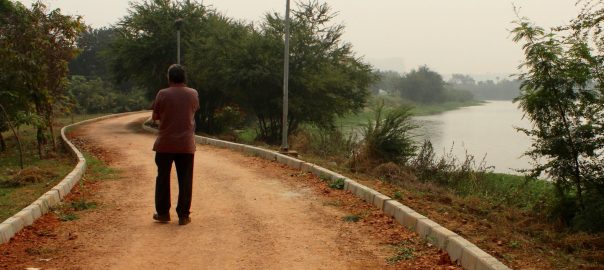
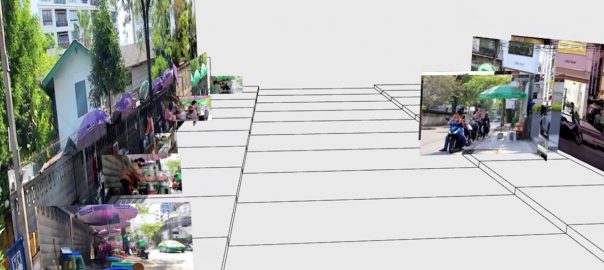
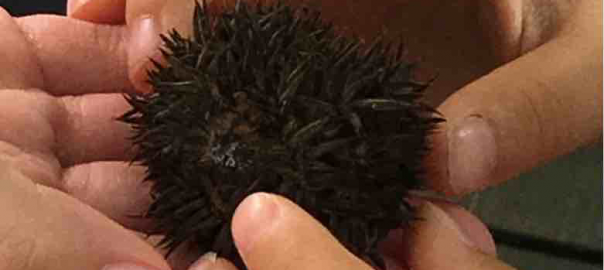

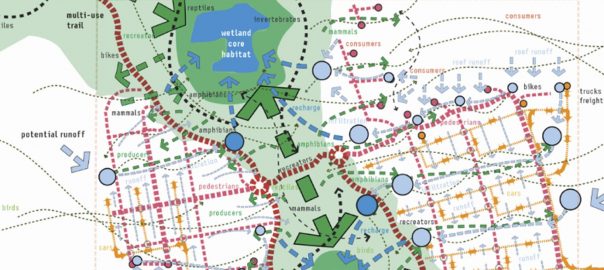
Leave a Reply